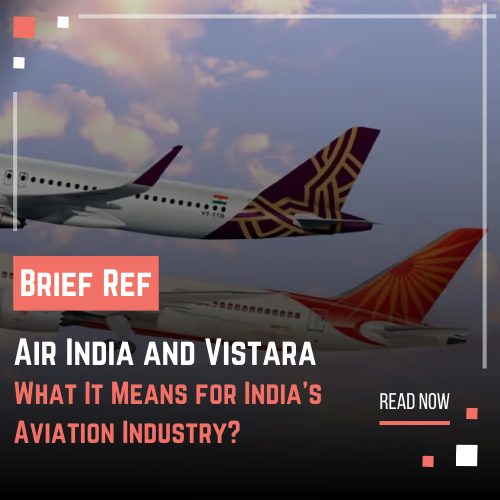What Is the Air India-Vistara Airline Merger?
The merger of Air India and Vistara marks a major shift in India’s aviation industry. As of November 2024, Air India, owned by Tata Sons, has absorbed Vistara—previously a joint venture between Tata and Singapore Airlines. This consolidation aims to unify operations, expand Air India’s network, and streamline costs. The merger also transitions all Vistara flights, services, and loyalty programs to Air India’s brand.
When Did the Merger Take Effect?
The first integrated flight under the new Air India-Vistara entity took off from Doha to Mumbai, marking the operational start of the merger. The domestic debut followed soon after, with an A320 flight from Mumbai to Delhi at 1:30 am on a recent Tuesday. Vistara, operational since 2015, operated its last flight on Monday before fully merging with Air India.
Why Was the Merger Necessary?
Tata Sons, aiming to strengthen its position in the aviation market, decided on the merger for several reasons:
- Financial Efficiency: Operating two full-service carriers proved costly, especially with both Air India and Vistara experiencing annual losses. The merger allows cost-sharing and operational streamlining, Vistara Airline
- Brand Integration: Air India, with a legacy brand, seeks to improve its image and quality by integrating Vistara’s premium services.
- Market Competitiveness: A unified Air India places the Tata Group in a stronger position to compete against India’s leading airline, Indigo.
Who Is Involved in the Merger?
The merger involves key players such as:
- Tata Sons: Owner of Air India, which also owned a stake in Vistara through a joint venture with Singapore Airlines.
- Singapore Airlines: Retains a 25.1% stake in the combined entity, supporting Tata’s plans to build a stronger airline.
- Air India and Vistara Teams: From customer service to flight operations, both teams now work as a unified workforce under Air India.
Where Did the Merger Process Take Place?
The merger activities are taking place across India, particularly in hubs like Mumbai and Delhi, where Air India and Vistara operate major flights. However, the impact extends globally, with Vistara’s international routes and ticketing systems transitioning to Air India.
What Are the Impacts of the Merger on Passengers?
The merger brings significant changes for passengers:
- Unified Loyalty Programs: Vistara’s frequent flyer program is now integrated into Air India’s system.
- Service Standard Concerns: Vistara’s high-quality in-flight experience has garnered loyal customers, who now face uncertainty about maintaining these standards with Air India, which has previously faced criticism for service quality.
- Expanded Route Options: With a combined fleet and route network, the merged entity offers more destinations and flights.
What’s Next for Air India Post-Merger?
Several initiatives are underway to ensure the success of the merger:
- Fleet Expansion and Upgrades: Tata has invested $400 million in retrofitting Air India’s older fleet and has ordered new Airbus and Boeing aircraft to boost service quality, Vistara Airline.
- Service Unification: Efforts are being made to combine the strengths of both brands, ensuring a consistent customer experience across all flights.
- Communication and Branding: Clear communication about the brand transition is vital to ease passenger confusion during the initial phases, Vistara Airline.
What Challenges Does Air India Face After Merging with Vistara?
The path ahead isn’t without obstacles:
- Service Integration: Combining Vistara’s premium services with Air India’s broader, varied service standards will require significant adjustments.
- Operational and Cultural Integration: Air India and Vistara have different organizational cultures, which may affect employee morale and efficiency.
- Rebranding Efforts: Aligning Vistara’s high reputation with Air India’s brand will be a test, given the latter’s struggle to compete with international standards in recent years.
Can Air India Fill the Premium Carrier Void in India’s Skies?
Many aviation experts are skeptical. With Vistara’s exit, Air India inherits the challenge of meeting high expectations for a premium flying experience. For loyal Vistara passengers, this merger represents the end of a unique brand in Indian aviation, leaving a gap not fully addressed since the collapse of Kingfisher Airlines and Jet Airways, Vistara Airlines.




